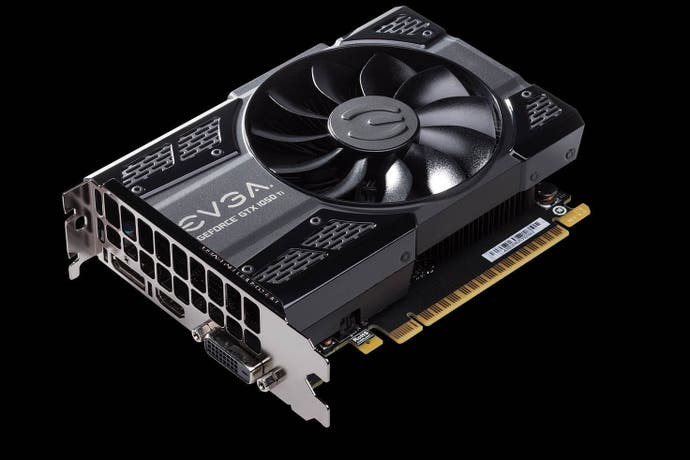Nvidia reveals GTX 1050/1050 Ti: Pascal on a budget
Keenly priced, with the promise of extreme overclocking.
Nvidia has finally revealed its next-gen GPU play for the budget segment, with the upcoming October 25th release of two graphics cards - the GTX 1050 and GTX 1050 Ti. We're still waiting for UK pricing, but at $109 and $139 respectively, the green team is clearly taking aim at AMD's Radeon RX 460.
The new cards are based on an all-new Nvidia processor based on its Pascal architecture, codenamed GP107. In its fully enabled form - as seen in GTX 1050 Ti - we get 768 CUDA cores, boosting up 1.39GHz. The 640 core GTX 1050 is based on a pared back version of the same processor, its reduction in shader count mitigated slightly by a higher boost clock.
TDP is limited to 75W, meaning that both cards do not require additional PCI Express power inputs - just like the RX 460, GTX 750 Ti and indeed a limited quantities of GTX 950s - but this appears to have had an impact on boost clocks. Other Pascal cards operate at around 1.8GHz in gaming workloads, overclocking to 2GHz. At the 1.4GHz ballpark, clearly GTX 1050 and Ti are going to be a lot slower.
On top of this, Nvidia has moved to a different production process for this Pascal card - Samsung's 14nm FinFET - which is licensed by AMD fab of choice, Global Foundries. Radeon cards have struggled to match the clocks found in Nvidia's Pascal architecture, but we're told that this is not a factor with the GP107 - custom cards with additional PCI Express power can apparently see overclocks hit 2GHz territory, just like the rest of the Pascal line-up.
| GTX 1050 | GTX 1050 Ti | GTX 1060 3GB | GTX 1060 6GB | |
|---|---|---|---|---|
| CUDA Cores | 640 | 768 | 1152 | 1280 |
| Boost Clock | 1.46GHz | 1.39GHz | 1.7GHz | 1.7GHz |
| Memory Interface | 128-bit | 128-bit | 192-bit | 192-bit |
| Memory Config | 2GB GDDR5 | 4GB GDDR5 | 3GB GDDR5 | 6GB GDDR5 |
| Memory Clock | 7GHz | 7GHz | 8GHz | 8GHz |
| TDP | 75W | 75W | 120W | 120W |
| Process | Samsung 14nmFF | Samsung 14nmFF | TSMC 16nmFF | TSMC 16nmFF |
UPDATE: Table above updated with corrected memory speeds for the GP107 cards.
In theory then, GTX 1050 Ti in particular - with its 4GB of RAM - could be a very interesting product. We could see 400-500MHz overclocks, which should see a remarkable uptick in performance. It may well be the best overclocker of the Pascal line-up, with boosts that could match or even exceed some of the remarkable overclocking performance we saw in Nvidia's last-gen Maxwell line-up. The notion of a 768 CUDA core GTX 1050 Ti matching the performance of the 1152 core GTX 1060 3GB GTX 1060 might be asking a bit much, but if we provisionally treat the GTX 1050 Ti as a vastly overclockable GTX 950, we should still see some excellent results.
Comparisons with AMD's Radeon RX 460 are also going to be interesting. At $109, the base GTX 1050 goes head-to-head with the entry level RX 460, while the Ti takes on the 4GB equipped factory overclocked cards. The higher-end Sapphire and Asus cards we tested didn't have a huge amount of overclocking headroom in them, so comparisons with similarly priced GTX 1050 Ti releases will be fascinating.
It's always great to receive the latest and greatest GPU technology to see just how far you can push them, but a lot of the time, it's actually a lot more fun to test the budget cards, to make the most of the limited resources in order to fashion the best overall gaming experience. The outgoing GTX 950 could match and outperform current consoles, though it often ran into VRAM limitations. GTX 1050 will hopefully be a worthy replacement but retains the same memory limitation, while the VRAM-heavy GTX 1050 Ti looks like the better bet overall. We'll have a full review of the two cards next week, and we're really looking forward to testing them.

